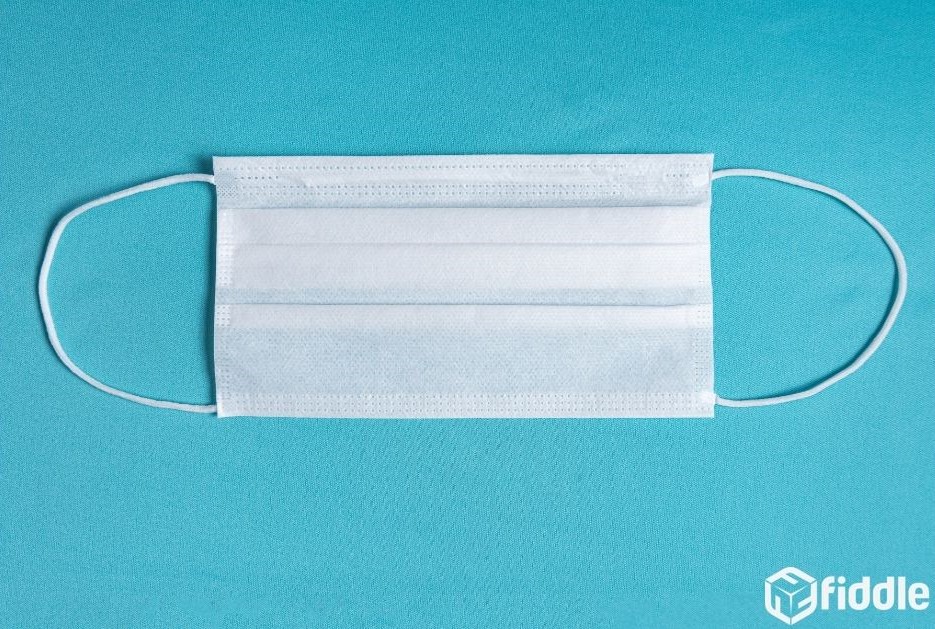Summary: In this article, you’ll learn about the best practices and documentation methods for each stage of life of manufactured foods and beverages. By documenting each and every step of the supply chain and manufacturing processes in industry-specific software, businesses can lower costly mistakes and eliminate inefficiencies thereby paving teh way for success.
The food and beverage industry is one of the largest in the world with a manufacturing capacity to match. However, because of the consumable and perishable nature of products, documentation (or lack thereof) is of particularly critical importance. In order to succeed in the industry and avoid costly errors, food and beverage (F&B) manufacturers need to be meticulous in their documentation methods at every stage with systems to match.The unique challenges of food and beverage manufacturing
The unique needs of F&B manufacturing industry are largely defined by two traits: the non-durable nature of goods and the volume at which they are produced. In 2018, food and beverage manufacturing accounted for an amazing 15% of all exports from U.S. manufacturing facilities. Combined, the volume and perishable nature of products creates an environment where manufacturers cannot simply concern themselves with only their own operations, but also need to be meticulous in their documentation throughout the supply chain. Correct documentation minimizes the risk of costly errors, such as the sweeping recalls of onions and onion products that occurred in July and August of this year. Put simply, the nature of the food and beverage industry puts additional responsibility on manufacturers that largely comes down to their ability to document and manage their supply chains and inventory.
Source documentation
In manufacturing, the documentation process starts long before materials and stock arrive at your warehouse. From quality control to cost effectiveness to the security of shipments, buyers have no shortage of obstacles to navigate in order to make purchases. This is especially true of international transactions. In order to facilitate trade, many governments and trade blocks have standardized practices that must be followed in order for merchants to be permitted to buy and sell across their borders. When considering which methods you use to document the purchase process, bear in mind that all practices must be in accordance with local trade laws. Keep in mind that while most documents can be provided electronically, some processes will require that you have signed hard copies. The documentation measures outlined below are some of the most commonly used systems to help facilitate trade and are generally standard across much of the world. That said, even within these systems, care should be taken to ensure that your organization of information suits your business needs and provides clarity throughout the sale and acquisition.
Recipes as a means of determining raw material needs
In the world of food and beverage manufacturing, ordering raw materials is complicated by the fact that a single batch of a recipe requires exact quantities of each ingredient. Determining your order quantity and lead time for each ingredient will depend on the volume of production, minimum order quantities, the shelf life of each ingredient, and the shelf life of your finished product. Rather than try to keep several separate documents to place orders, try organizing the sourcing and stock of all your ingredients into recipes. These can be easily adjusted to account for the specifics of other ingredients and also allows you to see your stock levels and order needs in the same document, making coordinating easier and eliminating deficiencies and surpluses of ingredients. Recipe organization also allows you to quickly determine how many units of a product you can produce using your existing inventory and help you to determine how much of a certain ingredient you might need in order to produce more units. By documenting your inventory as quantities of ingredients in a recipe, you ensure that your business makes purchases on schedule and in coordination with other ingredients so there is little to no waste. Organizing and automating your ordering process in terms of desired output helps you to exceed industry standards each step of the way at the lowest possible cost to your business.
Certifications and disclosures
While not true of all raw materials, many will require certifications and disclosures that need to be verified and recorded during the sourcing and purchasing processes. Many materials will need authentic ingredient disclosures, certificates of standards compliance, substance declarations, or certificates or origin, to name a few. These certifications will be needed later on when your finished product is submitted to the regulating body of your particular market for its own certificate. Failure to verify or locate such documentation could have varying severity of consequences depending on your market. Failing to provide proof of country of origin on a bar of artisan chocolate, for example, would hurt the price but still result in a viable product. In supplements, however, lack of necessary certification would almost certainly mean having to destroy stock if the ingredient disclosures or standards compliance certificates could not be located. Further, having verified certificates helps to eliminate the purchase of counterfeit, contaminated, or otherwise subpar materials that aren’t up to brand (or market) standards. Regardless, keeping a database of certifications for each shipment of materials helps to both ensure the quality of your product as well as the viability of it as a finished good.
Purchase of materials
Once the quality and authenticity of materials has been determined and an agreement has been made between the supplier and seller, a purchase order is sent from the buyer to the supplier. The supplier then verifies that the order type, quantity, and price are correct and sends an invoice to the buyer confirming the sale and its terms. Both parties should record both the PO and the invoice in the event that there is a discrepancy or a problem with the order, and also to ensure clarity during the shipping process.
Shipment tracking
Once the materials for your food or beverage product have been ordered, the supplier or the seller will draft and co-sign a bill of lading, or BOL. The bill of lading outlines the terms for the shipment of goods as well as designates ownership of the goods to the buyer. In some countries, the issuer of the BOL will need to be registered with government authorities. A separate record should be kept for each shipment, matching each BOL with the purchase order and invoice of the shipment. This is particularly important to food and beverage manufacturers as delays in transit can result in expired materials and should be tracked when entering the buyer’s warehouse so they can be processed accordingly.
Documenting your inventory
While the purchase and acquisition processes require compliance with other organizations, once you have taken physical control of your inventory, you have the freedom to document and record in a way that makes most sense to you and your business. Food and beverage manufacturers in particular need to ensure that their documentation systems are able to keep up with the type and volume of units they produce.
Back to basics: inventory accounting
While there are several different methods used to keep track of inventory, the nature of food and beverage raw materials means that your business will be using primarily the first in, first out (FIFO) method. By doing so, you ensure that none of your ingredients exceed their expiration date before being manufactured and sold. Because of the complexity of the inventory layers in a FIFO system, a capable software system must be used to provide accurate documentation of your inventory. And while not all food and beverage manufacturers have such short-lived products, the FIFO system should still be given preference over other systems due to its superior accuracy and wide use across the industry.
Work orders that work for you
Once you’ve acquired your raw materials, the manufacturing process can really begin. Your first step is to submit a work order for the particular product or batch that you’re making. As with the earlier steps, more is more when it comes to details because in the event of an accident or a batch that fails to meet industry standards, your documentation should be able to tell you where exactly in your manufacturing process the mistake occurred, whether the fault was in the worker, the materials, the work space, et cetera. This is particularly important when considering the risk of cross contamination on your manufacturing equipment. If your plant is one that processes any major allergens, then detailed work orders outlining which work spaces came into contact with which ingredients helps to ensure food safety standards are met and that there is no chance of your product being a risk to the safety of others.
Building it better with batch tracking
Once you’ve submitted your work order, ingredients should be pulled from the shelves in accordance with FIFO practices and the data from the raw materials should be recorded along with the data from the other ingredients used to make that particular batch of product. Each ingredient in each batch of the finished good should be traceable to the exact shipment of the ingredient complete with the data from the purchase from the supplier. This process serves two key purposes. First, it ensures that your business is allocating raw materials in the most efficient manner possible by using the oldest inventory first. In an industry of perishable products, it is of critical importance that not only do you use the right ingredients, but that you use them in the correct order. The second and more important reason for tracking batch numbers from work order to shipment is that in the event of a failure in quality control, the source of the problem can be identified quickly and handled before the outcomes are too widespread to manage. Mistakes such as recalls are expensive enough simply in the lost cost of bad stock and labor, but a recall on poorly documented products means that in order to completely contain the problem, large quantities of finished goods must be destroyed to ensure that food with even the slightest chance of being contaminated is off the shelves and out of the grasp of consumers, all at cost to you. In addition to helping businesses minimize losses through mitigating recalls, tracked batch numbers help to determine which ingredient, supplier, and shipment were to blame for the contaminated goods. From there, thorough documentation allows vendors and their clients to determine the exact source of the problem, whether it be the supplier’s source, the methods of the shipper, the processes used by the manufacturer, et cetera. Worth noting, though, is that as with most aspects in manufacturing, the information is only beneficial if it is readily available, so batch records should be easily accessible and quick to generate in order for them to offer their full value. By streamlining and utilizing the power of precise batch records, businesses can maintain the quality of their products while minimizing their liability in the event of supply chain failure.
Seal of approval
Depending on the exact food or beverage being produced, this will be the step where those certifications and compliance documents will need to be organized and submitted to your specific product’s governing body so it can be approved for sale. For every new product offered for sale, the certificate is submitted with the batch numbers and ingredient information of the products that the certificate guarantees to prevent any cheating or fraud. If this is a product that you have produced frequently in the past, then this step may simply become a matter of renewing your existing approval. This also where the information on your certificates and/or orders will be applied to create nutrition information and expiration dates for each batch of your finished product.
Inventory reconciliation documentation
Finally, once your product has completed the manufacturing process, it’s time to reconcile your existing inventory with the amounts you used to create your food or beverage product. While the realities of production mean that there will be some shrinkage in your inventory, overall your stock levels should be a near exact reflection of the number of units that you produced. This is another circumstance where recipe storage comes in handy as the number of units produced by the recipe will multiply across the quantities of ingredients used in production to tell you how much of your inventory was consumed during production. While these figures could be inventoried manually, having a recipe whose calculations are automated both removes human error from the process of inventory reconciliation and frees up more time for inventory managers to attend to other matters.
On its way out
Now that your product has finished the manufacturing cycle, it’s ready to be sold on the market. Unless you are the sole vendor of your finished goods, then the usual sales process begins whereby a buyer and seller exchange purchase orders and invoices. Once a sale is confirmed, shipment details are arranged by the vendor. While less important in the world of durable goods, the shipment agreement should include details such as the batch numbers of the foods and beverages being sent so in the event of delays in shipment, the viability of the product can be determined and the remaining clauses in the bill of lading can be carried out. Finally, the product leaves the manufacturing facility accompanied by documents outlining which batch numbers correspond to the orders made by each buyer, once again to ensure the transparency of the supply chain and to provide clarity in the event of errors.
The devil’s in the details
The unique nature of the goods produced by the food and beverage industry lends manufacturers to needing to be particularly careful in their documentation practices. Through diligent and readily available documentation on adequate software, manufacturers can eliminate errors and stay efficient in their methods while continuing to ensure the quality of their products. The process of bringing an idea from conception to fruition in the food and beverage industry can be daunting, but with the help of automated and industry-specific documentation practices, any business can achieve success.










